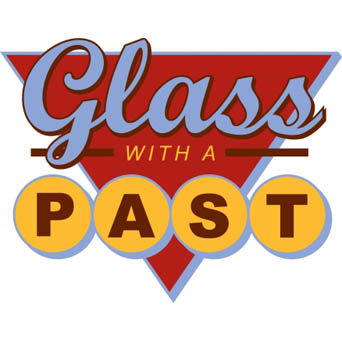 Well hello there! Today I’m answering more reader questions. If you have a question, send it on over. I’ve removed identifying information for privacy reasons.
Well hello there! Today I’m answering more reader questions. If you have a question, send it on over. I’ve removed identifying information for privacy reasons.
*****
Q: Hi, I’m extremely new to fusing/slumping glass, having been a lampworker for a number of years.
Since I have to import all my glass supplies anyway, having no access to brick/mortar stores here in Panama, I was wondering if you could offer recommendations on suppliers for your ancillary needs; forms, release, powders, etc. I’ve found multiple sources on-line, but am not sure who best fills the need for the recycled glass market. Any assistance will be welcomed. If you prefer not to post publicly, just send a private message.
A: I haven’t found any suppliers that cater specifically to the recycled market, but there are suppliers that I can recommend that I personally purchase from and have had good experiences with.
One of the first is Armstrong Glass. They carry a product called Float Fire, which is a fusible CoE 82 (+/-2) glass. It comes in powders, frits, eggshells and sheet and is compatible with float glass and most bottles. It comes in 5 oz, or 1 lb bottles, so it is much cheaper to ship than large sheets of art glass. A little goes a long way, and it’s a very versatile product.
http://armstrongglass.com/categories.php?cat=34
For miscellaneous releases, nichrome wire, tools, shelf paper, etc. I use Delphi Glass. They have a good selection, ship fast, and are willing to give smaller companies a wholesale discount. Because I don’t buy glass, my supplies purchases are the only thing I buy, so it’s hard to meet large minimum orders.
I also recommend Fusion Headquarters for MR97 boron spray release. They nearly always have the best price for that.
http://www.fusionheadquarters.com/Default.asp
For mica’s and enamels, I order directly from Thompson Enamels. I have purchased other mica’s (lusters), but the Thompson ones were equivalent in cost and smoother and easier to use. (I believe that lampworkers use some equivalent called Pixie dust? You may already have this product)
https://thompsonenamel.com/product_info.php?products_id=710&osCsid=qaq9uel3fufjlrpb9dde4793h6
For molds and plaster, I visit my local ceramic supply store. You may have access to unglazed terra cotta forms in Panama that can be kilnwashed and used as molds.
For shelf paper, I am a convert to the Spectrum Papyros shelf paper. It’s expensive, but I routinely get 3 firings, so I find it to be cost effective, and it has WAAAAY less dust than the other brands I’ve tried. I buy it from Delphi.
Q: I’ve been melting and slumping bottles for several years, selling them supports my glass habit. I’ve recently starting breaking bottles, stacking and over lapping the pieces then firing to make a tile. I then slump the tile, they turn out pretty nicely and make great abstract bowls. I’ve attached a picture of one that has given me a problem, I’m hoping you can answer my question.
Using a 1.75L wine bottle, I made the tile, it turned out nicely but a little thinner than I like. I slumped the dish, but I believe I didn’t soak it long enough, I wasn’t totally satisfied with the end result. I re-fired/slumped hoping to polish/refine it a little more. My kiln is in an insulated shed, but it still gets quite chilly in there, I opened the kiln to check my re-fire a little too soon. I heard a crack/pop when I opened the lid. My question… Can I fire the dish a 4th time, will re-slumping fix the crack?
A: It is amazing how quickly you get addicted to glass isn’t it?
The experimenter in me says it’s always worth a try for a 4th firing, if you have the time and don’t mind paying for the electricity.
The experienced glass part of my says, it may fix the crack, but it will increase any devitrification that you already have, and probably not help the edges.
Glass bottles are formulated to fire very quickly. In factories, they are blown into the molds, set up and released whole in a matter of seconds. As artists, we obviously don’t have that kind of equipment available, so we do the best we can with kilns. One of the work arounds for us is to fire slowly and give the glass a chance to melt more slowly.
This, in general, works well, despite the quick fire formulation of bottle glass. The down side is, our number of firings is very limited. I have had great success with a full fuse, followed by a slump. The second slump firing causes devitrification and the glass is stiffer and less viscous. Every firing after that increases the problem.
A second full fuse is even less successful.
This is particularly problematic for artists who cross over from art glass where the glass is formulated specifically for fusing and has more flexibility in regards to multiple firings.
That’s not a very definitive answer, unfortunately. If it were me, I would fire it again, take lots of photos and just see what happens. Make sure you’re annealing at 1060, not art glass annealing temp.
